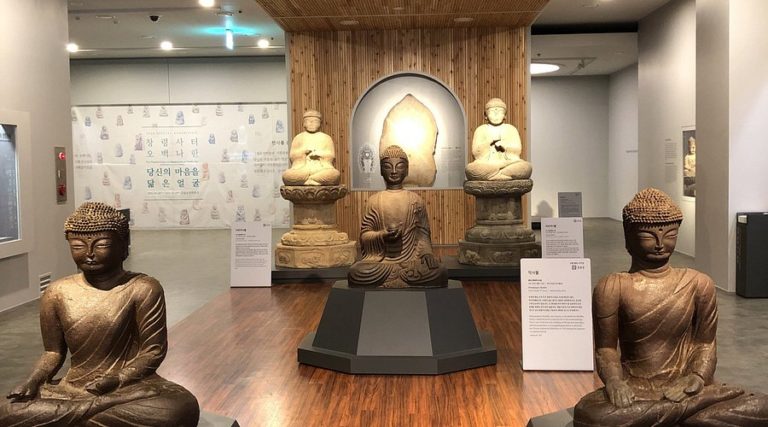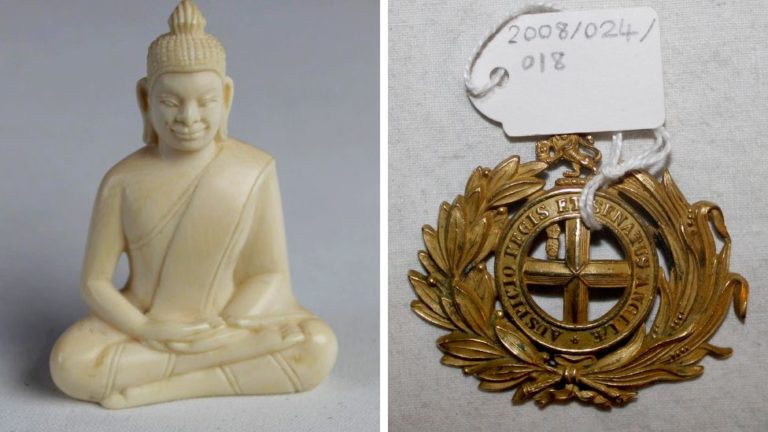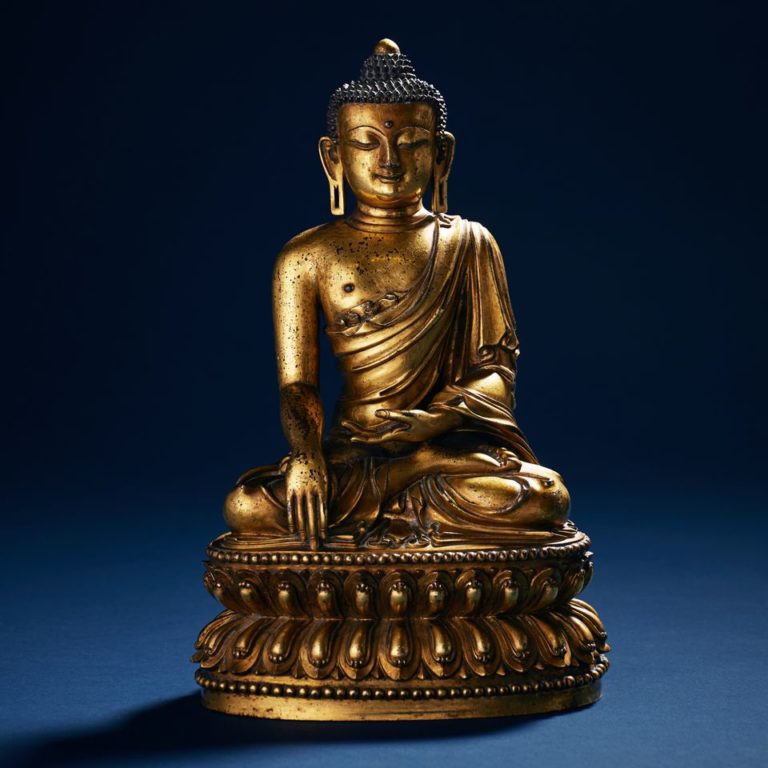The Buddhist temple Tōdaiji in Nara Prefecture is a priceless trove of history and culture. Founded some 1,300 years ago, the UNESCO World Heritage site is home to the Great Buddha of Nara and other national treasures. We tour the many places of interest on the temple’s expansive grounds.
An Ancient Cultural Center
The ancient capital of Heijō-kyō was established in what is now Nara Prefecture in 710 and remained the seat of Japan’s imperial power until 794. During that time, it was the center of a great domestic cultural and political flourishing, as contact with civilizations on the Asian mainland brought a flood of new ideas. Many of Heijō-kyō’s temples and Shintō shrines have survived through the ages. Prominent among these is Tōdaiji, home of the Great Buddha of Nara, which along with other religious complexes and the area’s natural surroundings was registered as a UNESCO World Heritage site in 1998.

The stone-paved sandō (worshiper’s path) carries visitors to the Chūmon, a vermillion gate that is registered as an important cultural property.

A deer, a symbol of Nara, lounges next to a monument commemorating the ancient capital’s UNESCO listing.
The sprawling Tōdaiji complex sits at the foot of Mount Wakakusa within the confines of Nara Park, which boasts a cluster of historic temples and shrines. Established around 752, it was the chief temple of the Kokubunji national system of monasteries. During the Heian period (794–1185), it was a center of study of hasshū kengaku, the eclectic teachings of the so-called eight schools of Buddhism prominent in Japan at the time. It remains the head temple of the Kegon sect, one of the eight traditions.

Tōdaiji’s Daibutsuden Hall reflected in the mirror-like Kagami Pond.
Spanning Eras
The center of the Tōdaiji complex is the Daibutsuden Hall housing the Great Buddha of Nara. The hall has been destroyed by fire several times over its history, and the current structure dates from 1709. Measuring 48 meters high, 57 meters long, and 50 meters wide, it is one of the world’s largest wooden buildings. The hall and the Great Buddha contained within are designated national treasures.

Tōdaiji’s Daibutsuden Hall.

Tōdaiji lit up for Mantō Kuyōe, the Festival of 10,000 Lanterns, held every August 15. (© Jiji)

The face if the Great Buddha seen through a viewing window, which is only opened on New Year Day and during Obon. (Courtesy Nara Visitors Bureau)
The Great Buddha of Nara stands 15 meters high, making it one of the largest such images in the world. It is a depiction of the Roshana Buddha, also known as Biroshana or Vairochana in Sanskrit, the so-called cosmic Buddha or “great illuminator” who shines mercy upon the earth. The statue is normally hidden from view from the outside, but at certain times of the year a special window overlooking the sandō and central gate is opened to reveal the face of the Buddha.

The statue depicts the Roshana Buddha in seated position.

The Buddha has been damaged by fire and restored several times during its life, as manifested by the differing tints of bronze on the head and chest.
Tōdaiji’s roots are with the temple Kinshōsanji, which was built in 728 for the repose of the spirit of the son of Emperor Shōmu (701–56). In 743, following several years of natural calamities and political turmoil, Shōmu issued a proclamation for the erection of a great Buddha in the hope of returning peace to the land. The colossal image represented an unprecedented undertaking, but Kinshōsanji’s head priest Gyōki used his influence to solicit money, materials, and labor from around the country. The image was completed in 749, followed by the Daibutsuden Hall in 752. It was around this period that the temple also came to be known as Tōdaiji.

The hakkaku tōrō, a six-sided, 4.6-meter-tall bronze lantern that dates back to Tōdaiji’s founding.
The hall was destroyed by fire in 1180 when forces led by Taira no Shigehira laid siege to the temple complex, which had sided with the rival Minamoto clan in the Battle of Uji marking the start of the decisive Genpei War. Restoration of the hall and image were carried out by the priest Chōgen and completed in 1185. Another conflagration consumed the hall in 1567, this time sparked by a skirmish between the Miyoshi and Matsunaga clans, damaging the bronze statue and leaving it exposed to the elements. Reconstruction and restoration efforts did not get underway in earnest until 1684 and would take 25 years to complete.
The Great Buddha that stands today represents reconstruction work spanning four periods of Japanese history. The chest and base are part of the original image cast in the Nara period, while the waist dates from the Kamakura period (1185–1333), the upper body from the Warring States period (1467–1568), and head from the Edo period. A careful observer will notice that the bronze making up the face of the Buddha is in better condition than the chest, which is several centuries older.
A full-scale replica of a lotus pedal from the pedestal of the Great Buddha. Displayed next to the dais in the Daibutsuden Hall, it provides visitors an up-close look at the lettering of the Flower Ornament Sutra decorating the statue’s base.


A model inside the Daibutsuden Hall shows the structure as it originally stood. The first hall was considerably larger, soaring 100 meters into the air, and was flanked by two towering pagodas.
Renowned Guardians
Another of Tōdaiji’s prominent national treasures is the Nandaimon, the temple’s great southern gate. Rebuilt during the Kamakura period in a Chinese Song Dynasty design, it is one of the largest gates in Japan, at 25 meters high and over 8 meters wide. Nandaimon houses the kongōrikishi, a pair of grimacing wooden sentinels carved in 1203 by the master sculptors Kaikei and Unkei.

The Nandaimon is distinguished by its double hip-and-gable roof.
The two figures, powerful Niō guardian deities, are Agyō, whose mouth is agape and teeth bared, and Ungyō, whose jaws are clasped firmly shut. The massive statues stand on either side of the gate, their fearsome visages and powerful forms inspiring awe in visitors. Amazingly, Kaikei and Unkei are purported to have completed the imposing works in the short span of 69 days.

Tōdaiji’s renowned Niō statues Agyō (left) and Ungyō. Located on the sandō, the figures and the Nandaimon can be viewed at any time.
Historic Treasures
The most ancient of Tōdaiji’s architectural treasures is the Hokkedō, or “Lotus Hall,” built in the eighth century. Named for the Lotus Sutra (Hokke-kyō) and also referred to as the Sangatsudō, it hosted a ceremony celebrating the sutra held the third month of every year and was the site of the first lectures given on the important scripture in Japan. The hall houses the Fukūkensaku Kannon, the main object of worship, and several other images dating from the Nara period that are registered as national treasures.

The Hokkedō consists of the raidō worship hall (pictured), which was rebuilt during the Kamakura period, and the original shōdō image hall at the back of the structure.
West of the Daibutsuden Hall is the Kaidandō, which is part of the Kaidan-in complex, housing the Shitennō, majestic clay figures of the “Four Heavenly Kings” crafted during the Nara period and designated as national treasures. (The hall is closed to visitors through 2023 for restoration work, during which time the Shitennō will be on display at the Tōdaiji Museum.)
East of the Great Buddha is the Shigatsudō, also known as the Sanmaidō, which houses a statue of Jūichimen Kannon (Eleven-headed Kannon) that is designated an important cultural property, along with other masterpieces from the Heian period. Nearby is the Kaisandō, a hall dedicated to Tōdaiji’s first chief abbot Rōben that contains an image of the priest displayed once a year on December 16, and Ōyuya, the temple’s bath house built in the Muromachi period (1333–1568), also designated an important cultural property.
The Nigatsudō is the site of the Shunie Buddhist service, conducted at Tōdaiji for over 1,250 years, a highlight of which is the spectacular Omizutori ceremony in which pine torches are paraded along the building’s balcony. The original hall was destroyed by fire and the current structure, designated a national treasure, was rebuilt in 1669.

Priests swing pine torches along the balcony of the Nigatsudō in a rite known as Omizutori (literally “the drawing of water”), part of the Shunie ceremony held from March 1 to 14 each year. (© Pixta)
Two other sites reminding visitors of Tōdaiji’s tumultuous 1,300-year history are the ruins of the Kōdō, the old lecture hall now marked only by foundation stones, and the remains of the great eastern pagoda. Along with such areas of historical interest, though, the temple also presents visitors with seasonal charms like blossoming cherries in spring, sightings of fawns of Nara’s famous deer born in early summer, and autumn foliage.
Tōdaiji is best known for the Great Buddha, but visitors who take the time to explore the grounds will be rewarded with architectural and artistic treasures spanning the ages.

A fawn and its mother near Nandaimon.
Tōdaiji
- Address: 406-1 Zōshi-chō, Nara, Nara Prefecture
- Hours: Daibutsuden Hall, April–October 7:30 am to 5:30 pm, November–March 8:00 am to 5:00 pm; Hokkedō and Senjudō (Kaidan-in) 8:30 am to 4:00 pm; Tōdaiji Museum April–October 9:30 am to 5:30 pm, November–March 9:30 am to 5:00 pm (last entry 30 minutes prior to closing)
- Admission: Adults, junior and senior high school students ¥600; elementary school students ¥300 (fee includes Daibutsuden Hall, Hokkedō, Senjudō, and Tōdaiji Museum)
- Getting there: 20-minute walk from Nara Station on the Kintetsu Nara Line




